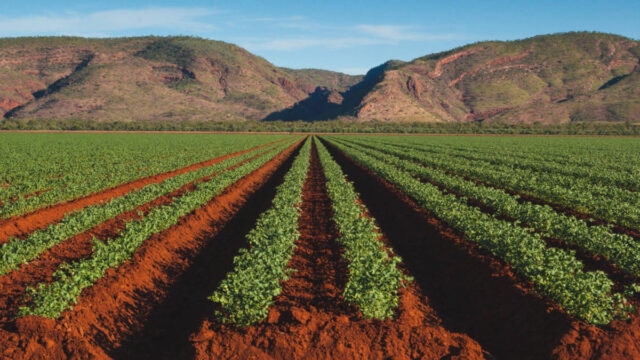ASX phosphate producers gear up to answer growing need
Phosphate is a key element in food production, but the Ukraine war has thrown supply into chaos. These ASX stocks are gearing up to help.

Stockhead
Don't miss out on the headlines from Stockhead. Followed categories will be added to My News.
The big three primary nutrients in commercial fertilisers – phosphorus, nitrogen, and potassium – were thrust into a geopolitical mess after Russia, the world’s top fertiliser exporter, invaded Ukraine in February 2022.
Back then, prices were already high due to various cost headwinds following the Covid-19 pandemic, but Russia’s war exacerbated these tight supply conditions, sending prices through the roof to historic peaks.
According to the International Food Policy Research Institute, uncertainties multiplied about fertiliser exports from Russia and Belarus due to the conflict itself, new or expanded economic sanctions on the two countries, and disruptions in Black Sea trade routes.
For the latest mining news, sign up here for free Stockhead daily newsletters
While much has been made about potash (potassium) and nitrogen fertilisers, our focus here is on phosphorus fertilisers, which play a major role in the formation of DNA, cellular energy, and cell membranes (and plant cell walls) and are typically produced from phosphate.
Given phosphate is an essential mineral for all life on Earth and is added to farmers’ fields in huge quantities, it has an important role to play in boosting food supply, with the global population tipped to surge past the 8 billion mark by 2024.
The problem is, phosphate is a finite resource – and its use has quadrupled in the last 50 years in line with population growth.
Experts believe the estimated date we will run out is getting closer with each new analysis of demand.
Some scientists are even projecting that moment could come in the next few decades, which poses a great threat to the growing market for lithium-iron-phosphate batteries.
Thankfully, a few ASX players, including RareX (ASX:REE), Avenira (ASX:AEV) and Centrex Metals (ASX:CXM) have emerged on the scene just in time with plans to develop projects, some of which have the potential to ease the supply squeeze.
What is phosphate and how does it make plants healthy?
Phosphorus fertilisers (phosphate) are linked to a plant’s ability to use and store energy, including the process of photosynthesis, as well as genetic processes such as cell divisions and plant growth.
Most Australian soils, however, are typically low in phosphorous due to extensive weathering, and farming can cause further depletion.
While our native vegetation has adapted to these soil conditions, introduced crops such as wheat, barley, oats and rye need phosphate added to achieve productive yields.
According to the NSW Department of Primary Industries, chemically, phosphorus is a very stable element.
MORE FROM STOCKHEAD: Corporate titans splash cash on lithium | Baowu seeks green steel partner | Lachlan Fold Belt’s time has come (again)
It quickly binds with iron and aluminium in the soil and becomes unavailable to plants, especially when soil pH is below 5.
“Because phosphorus is so easily fixed in the soil, crops and pastures take up only 5–20 per cent of phosphorus applied to the soil,” it says.
“When broadcast in permanent pastures, phosphorus accumulates on the soil surface and is readily available to plants when moisture allows roots to grow to the surface.
“However, it becomes less available to plants if the surface soil dries out.”
Bioavailability testing is one way mining companies can confirm whether or not their phosphate direct shipping ore (DSO) is suitable as a direct application fertiliser.
And RareX has confirmed exactly that at Cummins Range.
RareX recasts flagship project
While Cummins Range is one of Australia’s largest undeveloped rare earth projects, RareX is shifting gear and recasting its flagship project into a hybrid phosphate-REE development, with the fertiliser being first off the rank.
In an interview with Stockhead, CEO James Durrant (who was appointed to prepare the company for its transition towards development and operations) said this move was expected to lower the risk associated with building the full rare earth value chain outright.
“We are still intending to mine rare earths but since we have phosphate that sits above the rare earths in the ore body, we’ve decided to monetise the overburden by mining the phosphate first and selling it,” he explained.
“This way, we can buy ourselves time before we move into the rare earths industry, which is always a challenge, and although a few select companies are doing it, I think there is a very high chance of some significant failures.
“Our strategy is to allow the first movers to push through those challenges and let all the learning in the industry to occur before we go all in.”
Visit Stockhead, where ASX small caps are big deals
All the benefits
The phosphorus bioavailability results reported earlier this month were shown to have “very high” phosphorus availabilities which were 2-4 times the industry high standard.
Good bioavailabilities were also observed across all grades and weathering zones revealing potential for increased production volumes.
“This rock phosphate we have is quite advantageous, it dissolves very readily into the soils and contains micronutrients such as magnesium and calcium, which are critical to a plant’s health – you don’t get these micronutrients in a synthetic fertiliser,” Durrant added.
“There’s a nice, natural blend that comes with rock phosphate.”
For RareX, the alternative would be to send the phosphate to an acid plant and turn it into a synthetic fertiliser, but why would it when there’s a market in Kununurra, 500km from the project site near Halls Creek?
“We know farmers are interested because the primary fertiliser distributor up there, Ord River District Co-operative, have signed an MOU (memorandum of understanding) with us to work on developing our product for local placement.”
The other benefit is that the potential fertiliser product from Cummins Range would not need to be imported to the region from interstate and international suppliers.
“At the moment, the local market in Kununurra buys fertiliser from Brisbane, which comes in from either Morocco or China and gets trucked over, so it is an incredible freight cost.
“What we can do is undercut the freight cost, provide a naturally locally sourced organic rock phosphate, mine it with people from the local community and deliver it into the local community, which is a nice circular economy.”
Which other ASX stocks have phosphate?
Avenira (ASX:AVE) has ambitious plans for a two-pronged move to sell its ore from the Wonarah phosphate project in the NT for lithium iron phosphate (LFP) battery cathode production.
An early-stage scoping study on its LFP plant development within the Middle Arm Sustainable Development Precinct (MSDP) released early March envisaged either a one train (10,000tpa) or three train (30,000tpa) cathode plant, costing $180 million and $527 million to build, respectively.
The company is making progress on its feasibility study and approval processes for Wonarah, which are required to begin trial mining and the DSO project.
Meanwhile, the Centrex Metals (ASX:CXM) share price has risen from 2.1c in mid-March 2020 to the current share price of 0.14 on the back of sending its first international export of phosphate rock to New Zealand from its Ardmore project in Queensland.
In early April 2022, the company sold a 5000 wet tonne trial shipment to Ravensdown on a free-on-board basis to be loaded at Townsville, Queensland.
At the end of May this year, the company exported its first shipment to a substantial commercial fertiliser-producer customer of Samsung C&T in South Korea, opening doors for further growth into the Asian market.
This content first appeared on stockhead.com.au
At Stockhead, we tell it like it is. While RareX is a Stockhead advertiser, it did not sponsor this article.
SUBSCRIBE
Get the latest Stockhead news delivered free to your inbox. Click here
Originally published as ASX phosphate producers gear up to answer growing need


